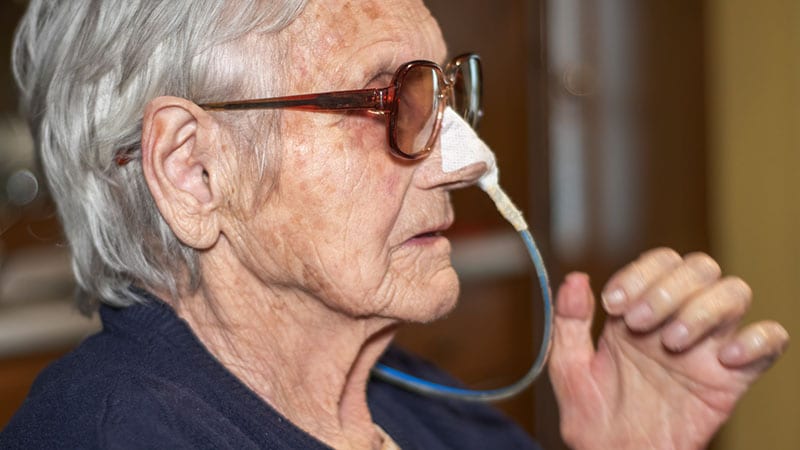Sarcopenia Predicts Feeding Tube Placement in OPSCC Patients
Temel Kavramlar
Sarcopenia can predict the need for feeding tube placement in OPSCC patients undergoing radiation or chemoradiation therapy.
Özet
TOPLINE:
Detecting sarcopenia alongside malnutrition markers can guide feeding tube placement decisions in OPSCC patients.
METHODOLOGY:
Sarcopenia in OPSCC patients linked to worse survival.
No universal protocol for feeding tube recommendation.
Study on 194 OPSCC patients to predict feeding tube need.
TAKEAWAY:
30.9% patients received feeding tubes.
Sarcopenia identified in 73% based on C3 measurements.
Patients with feeding tubes had lower skeletal muscle index.
IN PRACTICE:
T4 skeletal muscle mass may be a practical biomarker for sarcopenia detection.
SOURCE:
Led by Nedeljko Jovanovic from Western University, London, Ontario, Canada.
LIMITATIONS:
Retrospective design, single-center setting, predominantly male sample.
DISCLOSURES:
No funding received, no competing interests.
Sarcopenia Predicts Feeding Tube Placement in OPSCC Patients
İstatistikler
Studies indicated that 33%-62% of OPSCC patients undergoing radiotherapy receive feeding tubes.
60 patients (30.9%) received an enteral feeding tube.
The optimal cutoff value for feeding tube placement was 48.4 cm2/m2 with an area under the curve of 0.638.
Alıntılar
"Skeletal muscle mass measured at T4 may represent a novel and practical biomarker for sarcopenia detection."
Önemli Bilgiler Şuradan Elde Edildi
by Deepa Varma : www.medscape.com 03-22-2024
https://www.medscape.com/viewarticle/sarcopenia-may-predict-feeding-tube-placement-patients-opscc-2024a10005d2
Daha Derin Sorular
How can the findings of this study impact the current treatment protocols for OPSCC patients
The findings of this study can significantly impact the current treatment protocols for patients with oropharyngeal squamous cell carcinoma (OPSCC). By identifying sarcopenia at baseline as a predictor for the need for feeding tube placement, healthcare providers can proactively assess and manage nutritional support in OPSCC patients undergoing radiation or chemoradiation therapy. This information can guide decision-making regarding the timing of feeding tube placement, potentially reducing complications related to malnutrition and improving patient outcomes. Integrating skeletal muscle mass measurements, particularly at the T4 level, into the assessment of OPSCC patients can enhance personalized treatment strategies and optimize supportive care interventions.
What are the potential drawbacks of using skeletal muscle mass as a predictor for feeding tube placement
While using skeletal muscle mass as a predictor for feeding tube placement in OPSCC patients offers valuable insights, there are potential drawbacks to consider. One limitation is the retrospective design of the study, which may introduce bias and affect the generalizability of the results. Additionally, relying solely on skeletal muscle mass measurements to guide feeding tube placement may overlook other important factors contributing to malnutrition and dysphagia in OPSCC patients. Skeletal muscle mass assessments may not capture the full complexity of nutritional status and functional outcomes, leading to potential underestimation or overestimation of the need for feeding tube placement. Furthermore, the optimal cutoff values for skeletal muscle index may vary across different patient populations, necessitating further validation and standardization in clinical practice.
How can the concept of using biomarkers for treatment decisions be applied in other medical fields
The concept of using biomarkers, such as skeletal muscle mass, for treatment decisions in OPSCC patients can be extrapolated to other medical fields to enhance personalized medicine approaches. In oncology, biomarkers play a crucial role in predicting treatment response, guiding therapy selection, and monitoring disease progression. By incorporating biomarkers into clinical decision-making, healthcare providers can tailor interventions based on individual patient characteristics, improving treatment outcomes and minimizing adverse effects. This personalized approach can be applied in various medical specialties, including cardiology, neurology, and rheumatology, to optimize patient care and promote precision medicine initiatives. Collaborative research efforts are essential to identify and validate biomarkers that can reliably inform treatment decisions across diverse patient populations and disease conditions.
0
